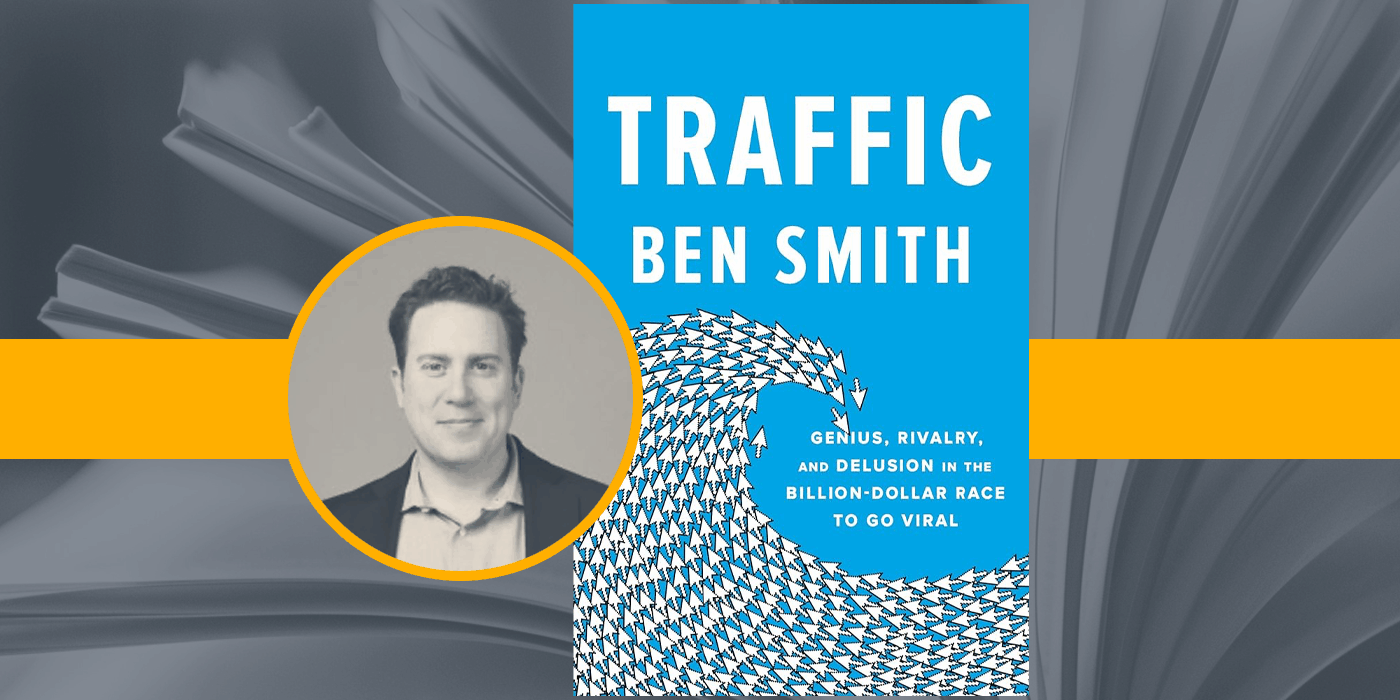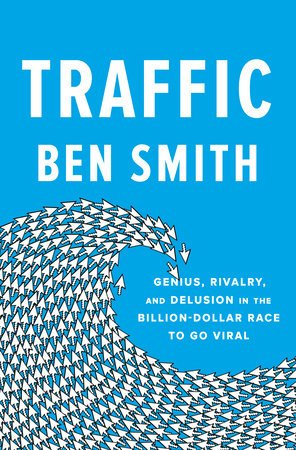A Review of Ben Smith’s Traffic
Every day, another pile of evidence lands on our collective desks, reaffirming the truth no one wants to admit: The Internet is a really unpleasant place to be.
-
X nee Twitter feeds the world fake news about Israel/Hamas.
-
Instagram has to apologize for its AI bots putting “terrorist” in the description of Palestinian profiles.
-
Netflix ups their ad-free price to 4x what we used to pay to get DVDs from them, while their catalog is as bad as ever.
-
Google’s coveted first page is now an expansive list of on-site content, some of it scraped from the people paying to get clicks that will never happen.
All the while, those who converted to the religion of Internetism in the 2000s and early 2010s are still spouting their religious dogma about the power of PPC, SEO, SEM, affiliate marketing, and the latest unsung platform that will fade into the wallpaper of also-rans in just a few short months.
Like me, you’ve attempted to grow a business anytime since the Obama administration. Along the way, you have been indoctrinated with all the strength of the Spanish Inquisition to believe that these tools are not only required elements but nearly magic factors in your future growth. The brand names may shift occasionally, but the promises never fade.
It is long overdue that business leaders learn the skepticism that those who created this world already know: The utopia of the Internet failed, and what’s left of it requires substantial evaluation.
An unfinished tapestry
When working with brands, I always start with a bit of archaeology. The Internet is helpful for this as nothing ever dies here. There’s a code trail showing where a brand has been, its promises, and the long history of terrible logos and self-made PR.
“What’s past is prologue,” as the Bard’s Tempest promised, so it should have come as no surprise to me that understanding the unraveling of the Internet’s religion and its grip on businesses would require its own backward glance.
The problem I discovered is that the story of “how we got here” of our digital playground is rarely told comprehensively. Sure, you can watch The Social Network or read about the fall of Yahoo!, but these siloed stories fail to tell something broader about the landscape. They are caught up in the Campbellian hero’s journey—a beloved story arc for those forged in Silicon Valley—where the shape of our stories is tightly defined, and progress is always a moral good. Most of these narratives fail on a fundamental level to question the assumptions of the system in which we play. They take the easy road by finding situational villains, the Mark Zuckerbergs and Elon Musks of the world. They promise a winsome fantasy: if only these brilliant men (always men) had kept their egos in check, our path to utopia would be winding out before us.
They tell the Great Man Fallacy in reverse.
Instead of the world made by a few great men, the digital revolution is painted as a fundamental human good, only mildly tainted by a few random narcissists who happened to be centrally involved in its creation.
“The Internet”
The Internet is a culture, a system of corporations and social norms tied together by enormous capital influences and political biases, built, managed, and controlled by a tiny circle of people.
I should pause briefly and acknowledge the sheer challenge of discussing “the Internet.” I am writing this review…on the Internet. I will post it on a website…on the Internet. I will send you an email to read about… through the Internet. The book I am reviewing… you guessed it. A book I discovered, ordered, and paid for… on the Internet.
The Internet is so fundamental to modern life that its basic infrastructure is more like plumbing or wiring than the surface level we experience daily. What we experience as “the Internet”… the network of websites and apps that fill our phones and laptop screens is often more narrowly called the Social Web or Web 2.0. It is a culture, a system of corporations and social norms tied together by enormous capital influences and political biases, built, managed, and controlled by a tiny circle of people. Many of them have been hand-crafting this world since the early 2000s.
After the Internet boom and bust of the early Millennium, a small segment of people, made rich by the early successes of AOL, Netscape, Paypal, and a handful of others, leveraged their newly founded digital wealth to recreate the web into a utopian society. The old power structures were to get disrupted. Everything was going to get Uberized. And it would all be made possible by our global interconnection through a new social web. The platforms now decaying underneath us: Facebook, Twitter, Google, and the like, rose from the ashes of Web 1.0.
When I say “the Internet,” that is what I mean. Not the literal wiring and server farms that keep the code moving millions of times around the globe every day, they are assumed. We must address the culture we made of all that code. How the medium defined the message and the utopia of an unfettered, libertarian, and “unmediated” reality would rise and fall in just two short decades, taking large swaths of society’s health with it.
Nothing has done the work of telling that story with the clarity, personal responsibility, and moral ambiguity of Traffic by Ben Smith.
It’s Me, Hi, I’m the Problem It’s Me
I knew Ben Smith primarily from his days as a go-to blogger at Politico in the lead-up to the 2008 election. I read his blog religiously, back when blogs were the Internet’s best source of up-to-the-minute thinking. I vaguely remembered him moving over to launch BuzzFeed News (an immediate contradiction in terms) a few years after that and then losing sight of him until I read the announcement of BuzzFeed News’s demise.
The book makes clear how a band of not-terribly emotionally sound people decided how the Internet should be.
At first glance, Smith is an illogical commentator on how the Internet rose and fell in social impact. But as the story plays out in journalistic precision, you see Ben’s proximity to action.
The book makes clear, filled with names you will recognize and those you won’t, how a band of not-terribly emotionally sound people decided how the Internet should be and then used the existential anxiety of old media plus the misguided wealth of Silicon Valley to build a world wide web coded for chaos. And then how those same people blushed in shock when chaos ensued.
The whole thing could come off as very “Gee, mister, we were just doing our best,” except for Ben’s careful placement of his own complicity. Ben pulls us headfirst into the moral milieu that got us here by neither aggrandizing nor glossing over his blindspots, misguided beliefs, and dangerous allies. The ride is breathtaking for both its intrigue and its revelations. And in classic internet style, it is validated by the sly “transparency” of its author. Smith refuses to feign neutrality. At crucial intersections, he takes full responsibility for decisions (hello, Steele Dossier) that turned the screws of fate for the world’s geopolitical map.
Along the way, we realize that the same people who claimed the moral imperative of liveblogging date rape and releasing Brett Farve’s dick pics were also the leading deciders on what content should flow to the top of your Facebook page. They believed whether “The Dress” was blue/black or white/gold was the same quality debate as whether Donald Trump colluded with the Russians to win the presidency.
The metric driving the moral high ground? Traffic.
What Happens Now
Smith suggests that the debate over “The Dress” on February 26, 2015, was the Internet’s nadir, leaving it in a steady decline ever since. Similarly, renowned digital marketer, Rick Webb, wrote his now infamous “Hey I was wrong the place turned out to be a terrordome” mea culpa. In it, he stated that the core beliefs of the WWW’s creators were either fundamentally flawed or grossly wrong on the time scale. At that point (December 27, 2017), the outcomes had been horrific.
It’s hard to say that things here have improved since then.
Personally, I take a “recovery” approach to the digital world we have made.
“The first step is to admit you have a problem.”
If you need help with that admittance, I couldn’t recommend this book more.


